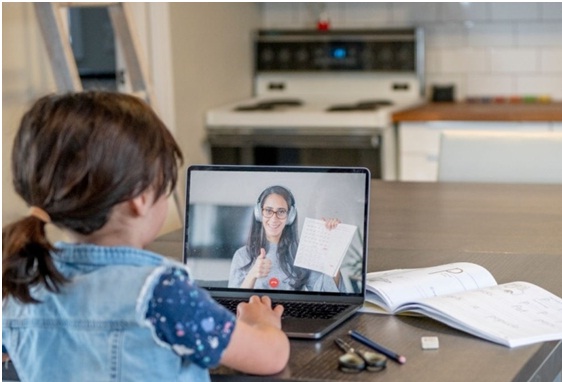Needless to say, during the past few years, education has evolved a lot. Now, the trained educators’ works are vastly different and the stakes have been amplified. Surviving as an education leader has always been tough and in the digital age, it becomes more challenging. Today, the art of leading looks massively different for school administrators. Now, they are working on the adaptation of their leadership practices to an environment with digital tools, remote collaboration and communication, and so on.
The ineffective leadership hampers educational institutions badly, in both public and private education systems. Researchers say one of the most fundamental problems of modern education is the lack of efficient leadership. Now it has become more important because schools must learn and familiarize themselves quickly with the internationally competitive environment where technology development affects their program structures. Remote learning needs perseverance on the part of administrators. They have to focus on their strategic planning exertions on outcomes.
So, how can educational leaders face this huge challenge? Nevertheless, this is no easy exploit, but also at the same time, it does deliver a great opportunity for school leaders to make a stronger school community by gripping ground-breaking learning and teaching approaches. Diploma in Education Leadership and Management programs are preparing future educational leaders.
Best Practices for Leading Through Virtual and Hybrid Education
Here are some effective tips for being the best education leader in this digital age –
- Effective Virtual Meetings
Educational administrators and other instructors need to remember to arrange a virtual meeting as early as possible so that everyone has time to formulate. It’s also significant to respect virtual meeting standards, such as muting video call attendees when someone is presenting and be reliable with the use of digital tools. Participants need to know their way around the digital tools.
- Understanding the Concerns
Not everyone appreciates the change! Change doesn’t come easy for every person, particularly in the digital technology space. Teachers stress their aptitude to completely implement technology in the classroom and their workspace, even after eras of classroom technology. Additionally, E-learning is here to stay, and yet not every teacher is being prepared to implement it knowledgeably and confidently. Doubts about digital tracks, security, and privacy, or more than that, can slow implementation unless the concerns have been addressed.
- Fill in the Blanks
The basic idea of fill in the blanks is to take some of the possessions that people naturally do face-to-face and extend the list so it’s not just classroom-related substances. Contemplate various ideas that are more on the creative side of things. Clear, dependable, and summarizing information-sharing is principal. Thus, leaders need to employ vital communication and check-in strategies.
- Collaborative Environment
Create a collaborative environment. Future educational leaders can expect to get support in public movements where everyone is empowered equally to contribute and collaborate inside and outside the school. Leaders have to discover different ways to guarantee that every school child will have a positive learning environment. It’s correspondingly important to not just talk about making learning perceptible for students; learning has to be visible so that every student can understand together. School leaders and other teachers must share what they’ve learned with each other.
- Change-Based Culture
It is essential to build a culture based on change. Including digital technology in a previously full area doesn’t make any change. As an alternative, try to encourage a real transformation of your work culture. Altering the culture of your organization lets to change the way everybody works together. Technology lets teachers produce a collaboration that doesn’t exist within the out-of-the-way classroom.
- Managing the Expectations
Online learning is a big change. Teaching virtually is also a big swing. Simultaneously, leading remotely is a big change as well. Simplifying and executing all of these concurrently throughout the indeterminate times is a colossal move. Thus, expectations are also not the same as when everyone was on a school campus. Hence, school leaders need to be thoughtful about communicating deviations in prospects with school children, teachers, and other school employees.
- Acknowledge Uneasiness
It is necessary to understand and acknowledge that these changes are hard-hitting, and they can’t happen immediately. School leaders should not falsify that the whole thing is usual and overlook the challenges their staff members are going through. Just asking how everyone is coping with these uncertain challenges and offering to support makes a world of difference. Allow time for transition.
- Staying Connected
Working remotely may be very lonely, thus, school leaders need to encourage and support the well-being of their colleagues. Boost them to intermingle with each other online, it can be a quick video call check-in or virtual happy hours after school. It’s also vital to think that achieving work-life stability may be more problematic for some when they’re working from home. Additionally, sharing mental health and wellness possessions also helps teachers avoid exhaustion.
Remote Learning Challenges and Problems
- Quality of Instruction is being affected
- Mismanagement of Technology
- Cost-Effectiveness
- Hidden costs
- Interruptions everywhere
- Staying motivated
Indeed, there are advantages as well –
- Learners work at their own pace
- Develops real-life skills
- Personal Growth is being encouraged
- Continuity of education for apprentices
- Save on costs and resources
- Remote learning improves knowledge of technology
A lack of effective leadership at all levels of establishments and society is real. There is a great necessity for actually effective administrators in the education system ever. Administrators need to embrace their managerial-leadership responsibilities that are informational, interactive, and decisional with the education leadership courses online. Only effective leadership will understand and apply the guidelines of exemplary leadership.






